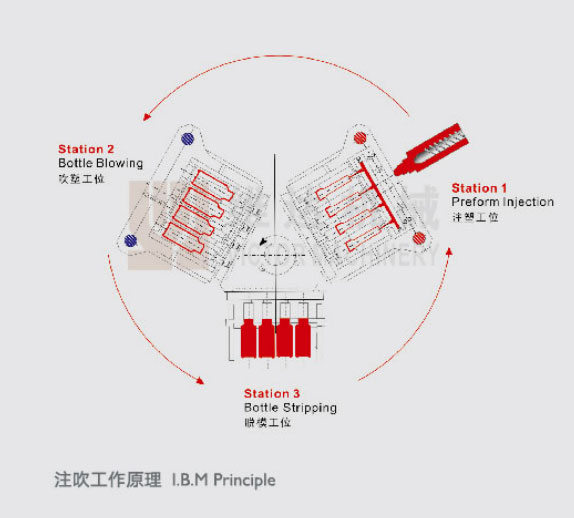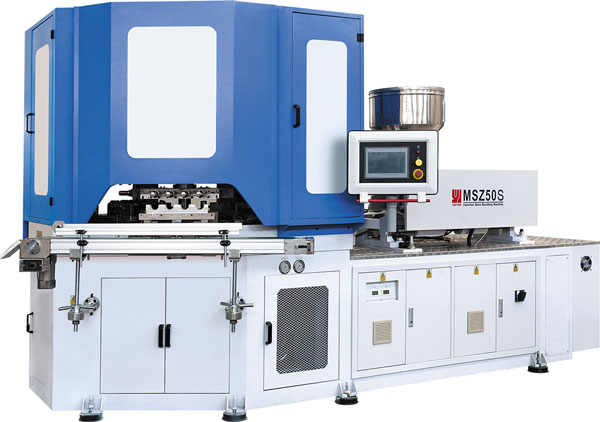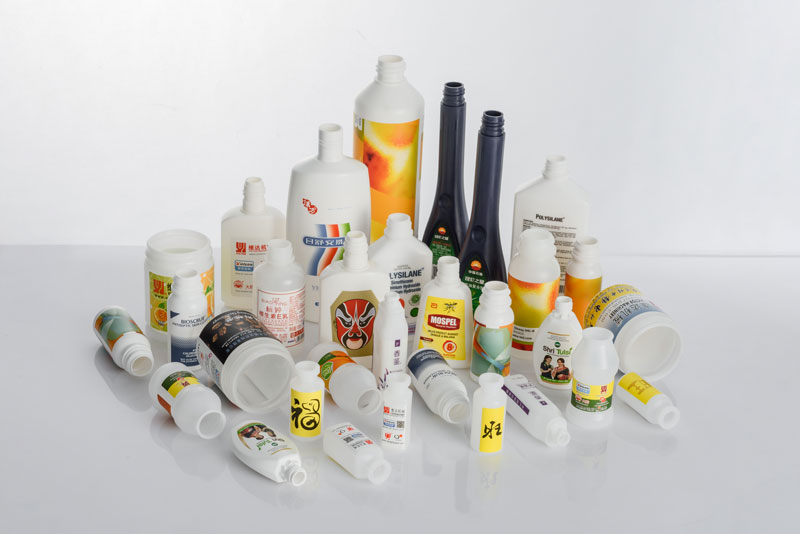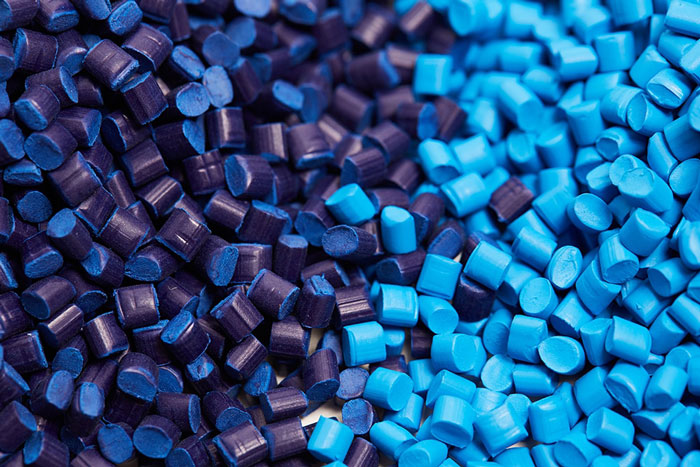What are the advantages of injection blowing process compared to extrusion blowing process?
Choosing the right molding process can make a significant difference in production efficiency and product quality. Let’s explore why injection blowing may offer advantages over extrusion blowing.
Injection blowing provides better product accuracy, higher automation, and more precise control over materials compared to extrusion blowing. It’s especially suitable for small, high-precision containers and high-quality packaging.

To fully understand the advantages of injection blowing, we first need to compare it with extrusion blowing. Let's break down the key differences between these two processes and explore how they work.
What is the difference between injection blowing and extrusion blowing?
Are you unsure about the differences between injection blowing and extrusion blowing? Let’s clear that up by comparing their processes and applications.
While both injection blowing and extrusion blowing create hollow plastic products, they differ significantly in how they form and handle materials. Injection blowing offers higher precision, while extrusion blowing is often more cost-effective for large-scale production.

The main difference between injection blowing and extrusion blowing lies in their molding processes and the type of products they produce. Though both processes are used to create hollow plastic objects, the methods of shaping and material handling vary significantly.
1. Injection Blowing:
In injection blowing, the process starts by injecting molten plastic into a mold cavity. A core rod is used to help form the preform, which is then cooled and shaped precisely. Once the preform is ready, it moves to the blow molding stage, where air is introduced to expand the plastic into the shape of the final product. Afterward, the product is demolded.
This process ensures that the product has a high level of precision and excellent surface finish. It is particularly useful for smaller containers, where dimensions and the finish of the product need to be exact. Products like cosmetic bottles, pharmaceutical packaging, and high-end plastic bottles benefit greatly from the injection blowing process. Injection blowing also has the advantage of lower residual stress, resulting in better impact and tensile strength in the final product.
2. Extrusion Blowing:
In extrusion blowing, plastic material is first extruded into a tubular shape. The extruded tube, called a parison, is then placed inside a mold. Compressed air is blown into the tube, which inflates the plastic to fit the mold. After the mold cools, the product is removed, and the excess material (flying edge) is trimmed.
Extrusion blowing is typically more cost-effective for large-scale production of hollow plastic items such as industrial drums and containers. It allows for the efficient creation of larger items but may struggle with achieving the same level of precision or wall thickness uniformity that injection blowing offers. This process is best for products that do not require fine detail or high aesthetic standards.
| Process | Injection Blowing | Extrusion Blowing |
|---|---|---|
| Molding Method | Preform is injected, blown, and cooled | Tubular parison is extruded, then blown |
| Precision | High accuracy and finish | Less precise, especially for small items |
| Applications | Small containers, cosmetics, pharma | Larger containers, industrial packaging |
| Wall Thickness | Uniform control | May have uneven thickness |
How do injection and extrusion equipment work respectively?
Understanding how the equipment works in both processes will help you better appreciate their differences. Let’s dive into the specifics of the equipment used in injection and extrusion blowing.
Injection and extrusion blowing equipment vary in complexity and operation. Injection equipment requires a precise injection mold system, while extrusion equipment relies on extruders to form and blow the parison into the mold.

The equipment used in injection and extrusion blowing plays a significant role in determining the effectiveness and efficiency of each process. Let's break down how each system operates to produce high-quality products.
1. Injection Blowing Equipment:
Injection blowing equipment consists of three main sections: the injection unit, the blowing unit, and the stripping unit. The injection unit is responsible for melting the plastic and injecting it into a preform mold. The mold is carefully designed to ensure high precision, and once the molten plastic is injected, it is cooled and solidified into a preform.
Once the preform is ready, it is transferred to the blowing unit, where it is inflated with compressed air inside a blow mold. The mold closes tightly to ensure a perfect shape, and the air pressure forces the plastic to expand into the final product's form.
Finally, the stripper unit removes the finished product from the mold and transfers it to a conveyor belt for cooling or packaging. The key feature of injection blowing equipment is its ability to produce products with very precise dimensions and high surface quality. The high level of automation in this process ensures high production efficiency, particularly for small products.
2. Extrusion Blowing Equipment:
Extrusion blowing equipment, on the other hand, starts with the extrusion of plastic through a die to form a tubular parison. The parison is then placed in the blow mold, where compressed air is used to inflate it to the desired shape. This process is simpler than injection molding, which makes extrusion blowing equipment more affordable for large-scale manufacturing.
The key component in extrusion blowing equipment is the extruder, which continuously feeds plastic material into the die. The extrusion process is typically more straightforward than injection molding, as it doesn't require the same level of precision for the initial material formation. The extruded parison can be easily manipulated to create a wide range of hollow products, although it may require trimming to remove any excess material left from the blow molding process.
The flexibility of extrusion blowing equipment makes it ideal for producing larger containers or products that don’t require the high precision that injection blowing offers. The trade-off, however, is that it’s more difficult to control wall thickness uniformly.
What is the difference between the raw materials used for injection blowing and extrusion blowing?
Different molding processes require different types of plastic materials. Let’s explore how the raw materials used for injection and extrusion blowing compare and how they affect the final product.
While both processes can use similar plastic materials, injection blowing requires plastics that offer higher precision and lower residual stress, whereas extrusion blowing is more suited for a wider range of materials, including those for large containers.

The raw materials used for injection and extrusion blowing processes can differ in terms of their properties and suitability for each process. While there is some overlap, each process has its preferred material types based on the required product quality and production speed.
1. Materials for Injection Blowing:
Injection blowing generally requires plastics that can provide a high level of precision, such as HDPE, and PP. These materials are chosen for their excellent dimensional stability, low residual stress, and ability to achieve a smooth, high-quality surface finish. PET, in particular, is commonly used for products like bottles and jars, where transparency and strength are crucial.
The ability to control the wall thickness uniformly in injection blowing means that these plastics can be used to create products with consistent thicknesses and fine details, such as bottle caps with threads or other intricate shapes. Injection blowing is ideal for high-end packaging, where the final product's quality and appearance matter most.
2. Materials for Extrusion Blowing:
Extrusion blowing, on the other hand, is more versatile in terms of raw material options. Plastics such as LDPE, HDPE, PVC, and PETG are commonly used in extrusion blowing. These materials are chosen for their ability to withstand the extrusion process and their suitability for large-scale manufacturing. Extrusion blowing is generally used for larger products like industrial containers, where precision is less critical.
While extrusion blowing can handle a wide range of plastics, it tends to struggle with easily melted plastics such as PET, which require higher precision in wall thickness control. The lack of precision in extrusion blowing means that materials with higher tensile strength, like PET, may not perform as well as they would in an injection blowing process.
| Material | Injection Blowing | Extrusion Blowing |
|---|---|---|
| Suitable Plastics | HDPE, PP, PVC, PS, ABS | LDPE, HDPE, PP, PETG, PVC, ABS |
| Product Type | Small, precise containers | Large, less precise containers |
| Surface Quality | High, smooth finish | Lower finish quality |
Conclusion
Injection blowing offers advantages in precision, automation, and material control, making it ideal for high-end, small-scale production. Extrusion blowing is more suited for large-scale, less precise manufacturing.




